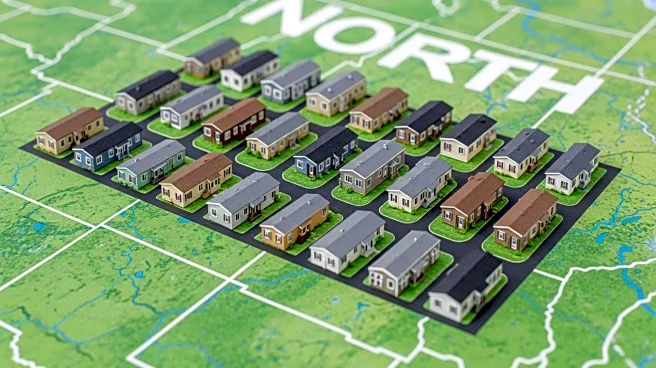What is the story about?
What's Happening?
A recent study has developed a comprehensive dataset of manufactured housing communities (MHCs) in the North Central United States using aerial imagery and advanced geospatial data processing techniques. The research involved partitioning geographic regions into tiles, retrieving and processing satellite images, and applying deep learning models to classify and map MHCs. The process utilized convolutional neural networks (CNNs) for image classification, overlaying tiles to create community plots, and preparing the final dataset by cleaning and joining secondary data. The study focused on the State of Wisconsin, where aerial imagery was used to identify and map MHCs, distinguishing them from non-MHCs through a series of image processing and classification steps.
Why It's Important?
This dataset provides valuable insights into the distribution and characteristics of manufactured housing communities, which are a significant component of affordable housing in the U.S. The ability to accurately map and classify these communities can aid policymakers, urban planners, and researchers in understanding housing trends and addressing housing needs. The use of advanced geospatial techniques and deep learning models enhances the precision of housing data, potentially influencing decisions related to zoning, infrastructure development, and resource allocation. The findings could also impact the real estate market by providing detailed information on housing types and locations.
What's Next?
The dataset is expected to be used for further research and analysis, potentially expanding to other states and regions. Future studies may focus on refining the classification models and integrating additional data sources to improve accuracy. Policymakers and urban planners might leverage this data to develop strategies for affordable housing and community development. The research could also prompt discussions on the role of manufactured housing in addressing housing shortages and affordability issues.
Beyond the Headlines
The study highlights the growing importance of geospatial technology and machine learning in urban planning and housing research. It underscores the potential for these technologies to transform how housing data is collected and analyzed, offering new perspectives on community development and land use planning. The ethical implications of using aerial imagery for housing analysis, including privacy concerns and data security, may also be explored in future discussions.
AI Generated Content
Do you find this article useful?
















